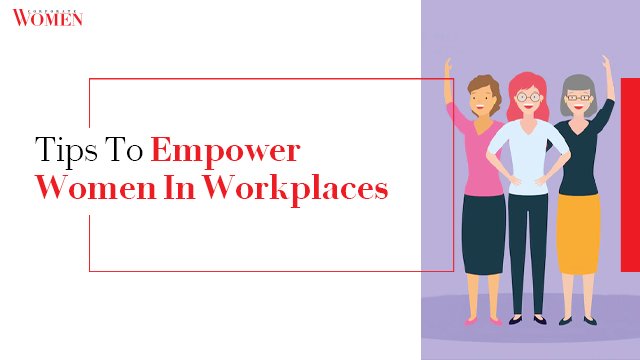Amplify Your Leadership Voice Worldwide
Join 7,000+ industry leaders sharing insights with millions of professionals globally
Join 7,000+ industry leaders sharing insights with millions of professionals globally

The majority of women around the world still face discrimination and inequality in the workplace. In most cases, they are paid less than their male counterparts and are often not given the same opportunities for career advancement.
Women empowerment in the workplace is essential to create a level playing field and ensure everyone has an equal opportunity to succeed. There are a number of ways to empower women in the workplace, such as training programs, mentorship programs, and flexible work arrangements.
Implementing these measures can help create a more inclusive and diverse workplace where everyone has an equal chance to thrive.
There is a growing body of evidence that suggests that empowering women in the workplace can have a positive impact on business outcomes. A recent study by McKinsey found that companies with gender diversity on their executive teams were 21 per cent more likely to outperform their peers. And a study by Boston Consulting Group found that companies with more women in leadership roles outperformed those with fewer women by 16 per cent.
There are many reasons why empowering women in the workplace can benefit businesses. For one, companies with gender diversity are more innovative and better able to attract and retain top talent. In addition, companies with more women in leadership roles tend to have better communication and decision-making.
So what does this all mean for businesses? Empowering women in the workplace is not only the right thing to do but also makes good business sense.
There is no doubt that women have made great strides in the workplace over the past few decades. But despite these advances, women still face many challenges when it comes to achieving leadership roles in companies.
There are several reasons why women are underrepresented in leadership roles. For one, women are often the primary caretakers in families and thus have more domestic responsibilities than men. This can make it difficult for women to balance work and family life, leading to more women opting out of advancement opportunities. Additionally, women often face biases and stereotypes in the workplace that make it harder for them to be promoted into leadership roles.
Despite these challenges, there are several ways to encourage women to pursue leadership roles in companies. Providing flexible work arrangements and offering mentorship and networking opportunities are just a few of the ways to help level the playing.
Companies with more diverse and inclusive cultures perform better than their counterparts. Studies have shown that companies with diverse workforces are more innovative and better able to adapt to change. They also have happier and more engaged employees.
Creating an inclusive culture can be difficult, but it’s worth the effort. Here are a few tips on how to build an inclusive culture in your company:
Organisations today are increasingly aware of the importance of diversity and inclusion. In order to create a workplace that is welcoming to all, organisations must implement policies and practices that foster inclusion.
One way to foster inclusion is to provide training on diversity and inclusion for all employees. This training can help employees to understand the importance of inclusion and how to create an inclusive environment.
Another way to foster inclusion is to have a clear and concise policy on diversity and inclusion. This policy should be easily accessible to all employees and should outline the organisation’s commitment to creating a diverse and inclusive workplace.
Organisations that foster inclusion through policies and practices create a workplace that is welcoming to all. By creating an inclusive environment, organisations can improve their overall performance and better meet the needs of their employees and customers.
The role of women in the workplace has changed greatly over the years. In the past, women were often relegated to secretarial or support roles. But today, women are leaders in all industries, from business to government to education.
Despite these advances, there is still room for improvement. Women still earn less than men for doing the same job, and they are often passed over for promotions. But with more women in leadership roles, we can slowly start to close the gender gap in the workplace.
So what can we do to support Women in the workplace? We can start by ensuring that women have the same opportunities as men. We can also provide mentorship and professional development opportunities specifically for women. And we can create an environment where women can feel safe and respected.
There are a number of ways to empower women in the workplace. Providing opportunities for mentorship, training, and development can help women feel confident and capable in their roles. Additionally, creating an inclusive culture where everyone feels respected and valued can go a long way in empowering women in the workplace. To learn more about how to empower women in the workplace, subscribe to our blog or follow us on social media.
Join industry leaders who have shared their insights with millions of professionals globally.
Copyright © 2025 The Corporate Women. All Rights Reserved.